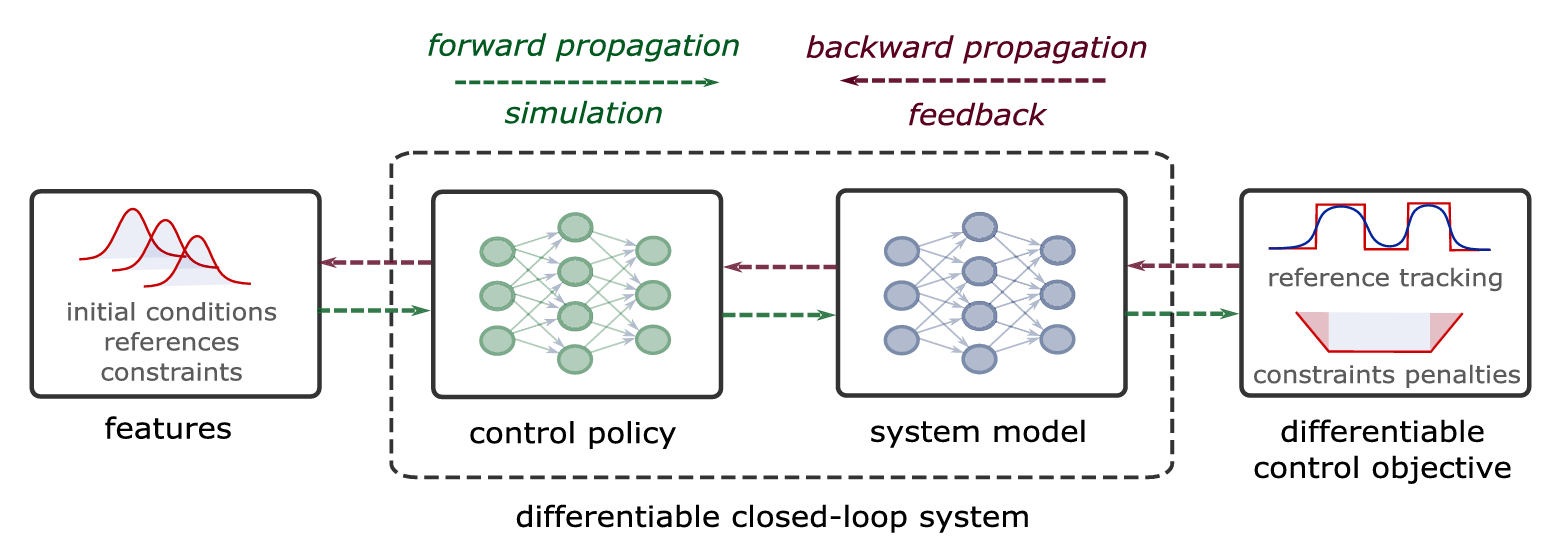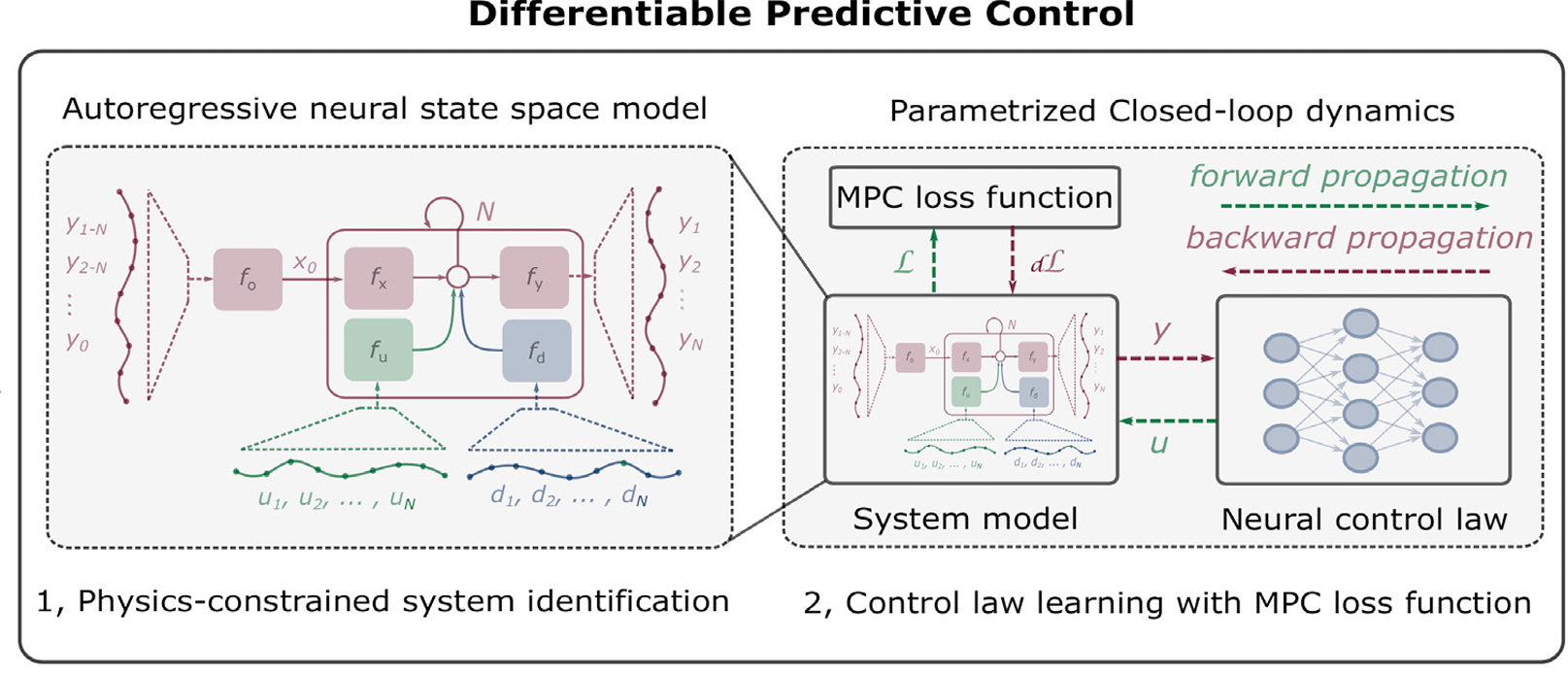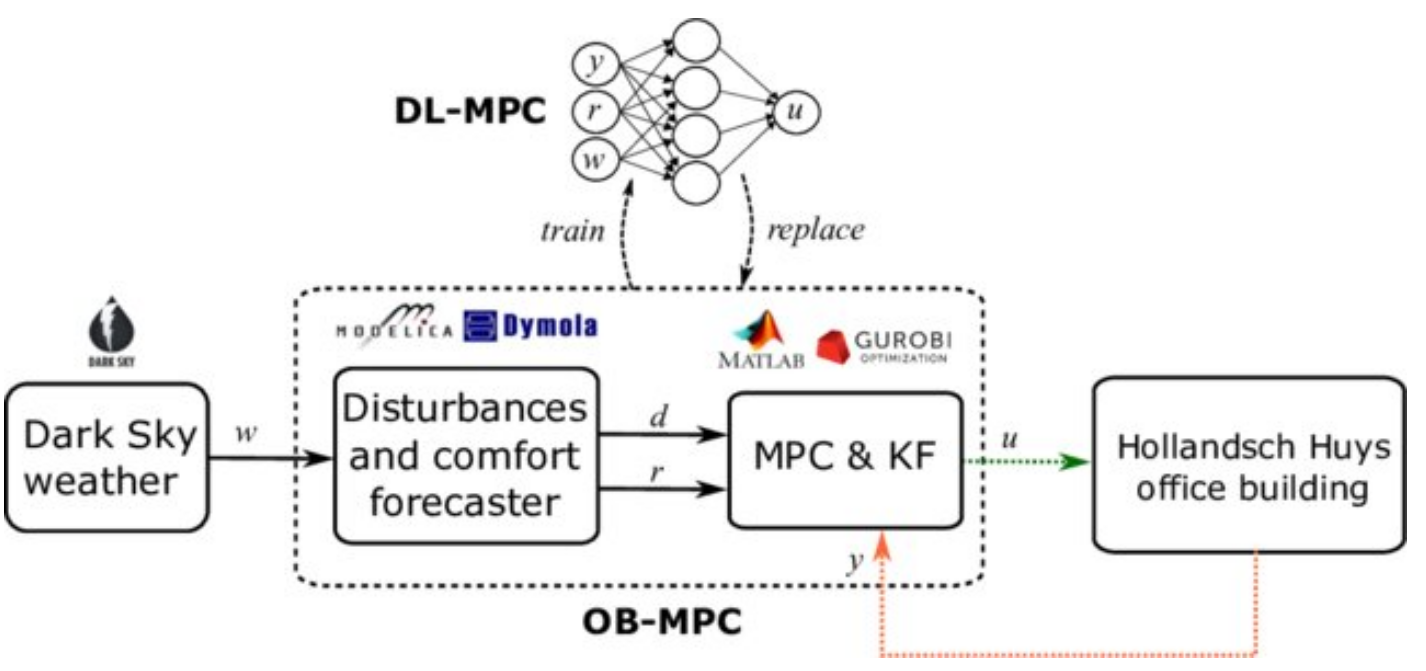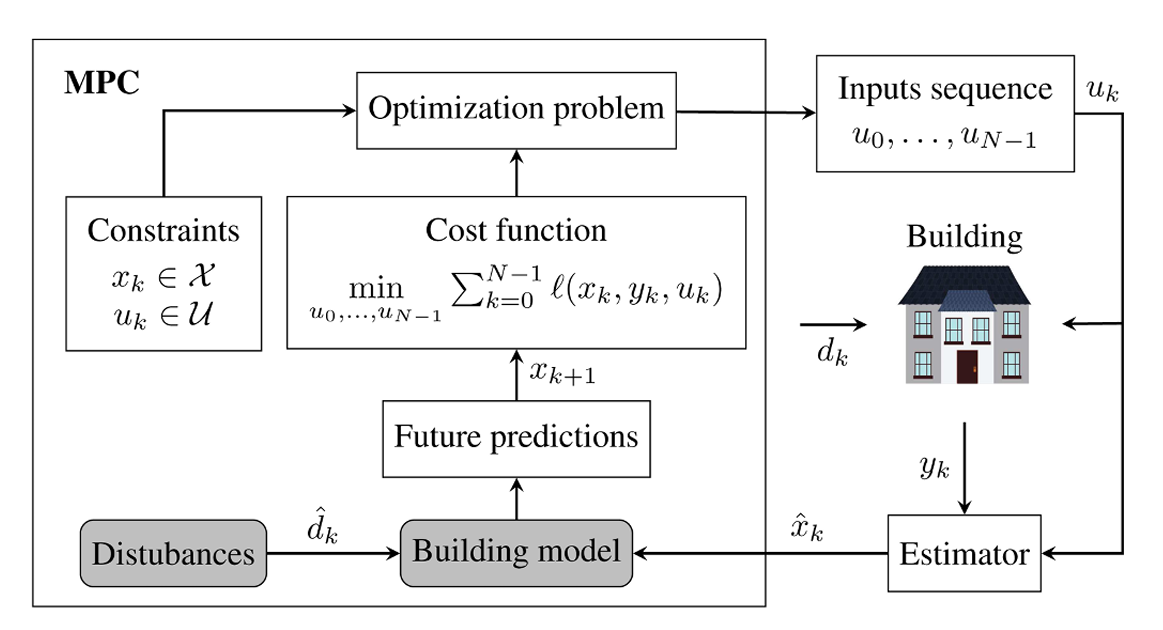SciML for buildings
Developing differentiable predictive control (DPC) as a market-ready technology for energy-efficient building control.
Abstract
At PNNL, I have led the development and demonstration of differentiable predictive control (DPC), a state-of-the-art advanced control method, that enables rapid design and scalable deployment of predictive controls for building energy systems. DPC provides benefits of model predictive control (MPC) at costs and complexity of traditional controls allowing for improved control and predictions which result in reduced energy use, demand flexibility and improved air quality. Under this project, my PNNL team collaborates with industry partners to integrate DPC with existing market-available control products to develop affordable, high-performance, and scalable predictive control solutions that can be deployed in new and existing buildings to reduce energy, peak demand, greenhouse gas emissions, and improve occupant comfort. The project will demonstrate the DPC technology’s flexibility in design and deployment to industry use cases and underlying building energy systems without substantial, bespoke rework. This applied research is directed by industry objectives to bring to the market this new capability, and enable its broad deployment. The resulting buildings control technologies and deployment enabling software will significantly advance BTO’s goals to reduce emissions in US buildings.
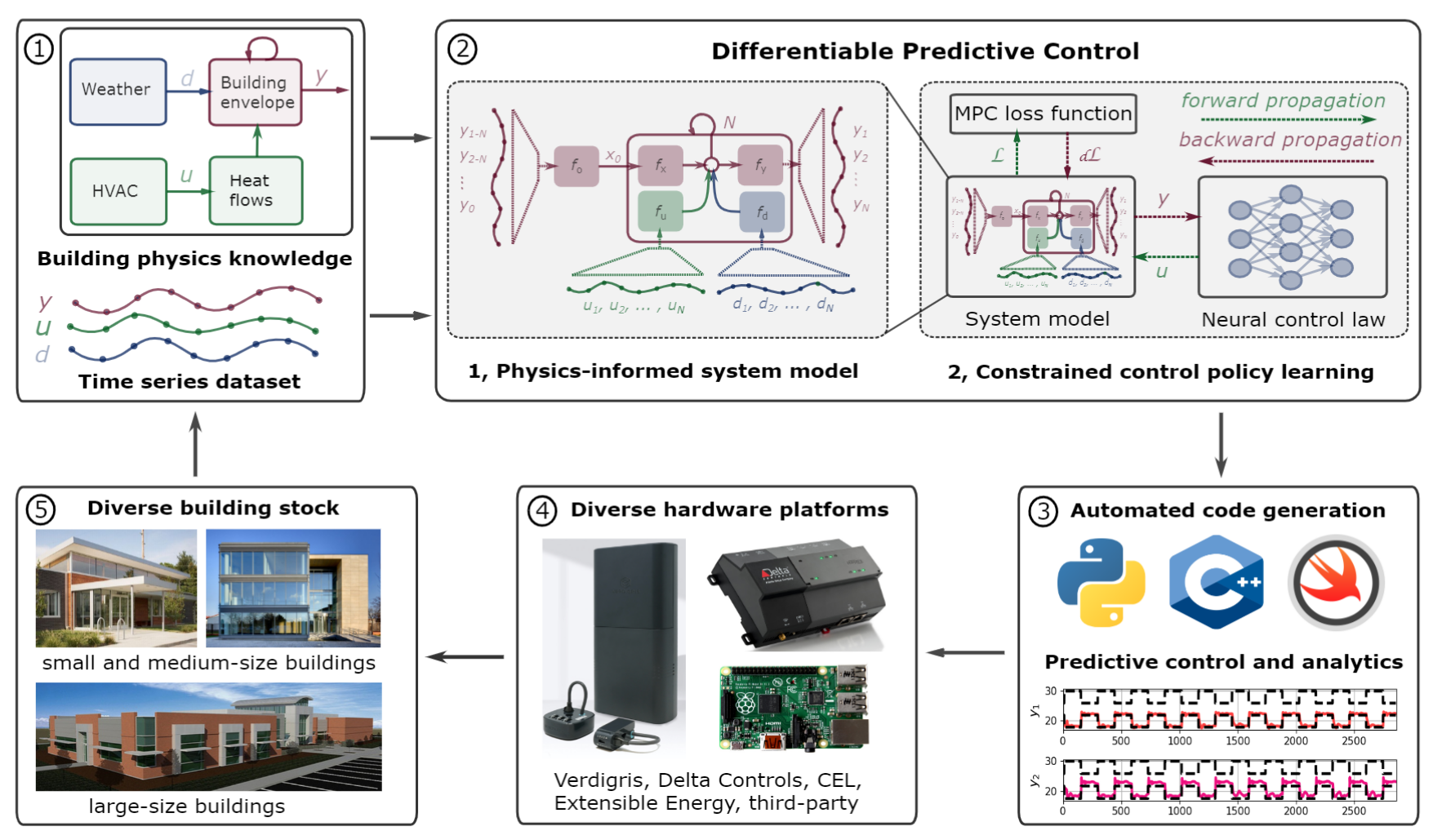
Modeling building thermal dynamics with SciML
Energy-efficient buildings are one of the top priorities to sustainably address the global energy demands and reduction of the CO2 emissions. It has been demonstrated that advanced building control, like model predictive control (MPC) or deep reinforcement learning (DRL), can notably reduce the energy use and mitigate greenhouse gas emissions. However, in order for these advanced control methods to work in practice, they heavily rely on accurate prediction models of building thermal dynamics.
To address this, our team has developed novel scientific machine learning (SciML) method for control-oriented modeling of building thermal dynamics. Specifically, our method incorporates structural prior knowledge from traditional physics-based building modeling into the architecture of the deep neural network model. Further, we also use penalty methods to enforce inequality constraints, thereby bounding predictions within physically realistic and safe operating ranges. We show that using only 10 days’ measurements for training, our method is capable of generalizing over 20 consecutive days. We demonstrate that the proposed modeling methodology is achieving state-of-the-art performance by significantly improving the accuracy and generalization compared to classical system identification methods and prior advanced methods reported in the literature. compared to prior state-of-the-art methods reported in the literature. For more information read our paper.
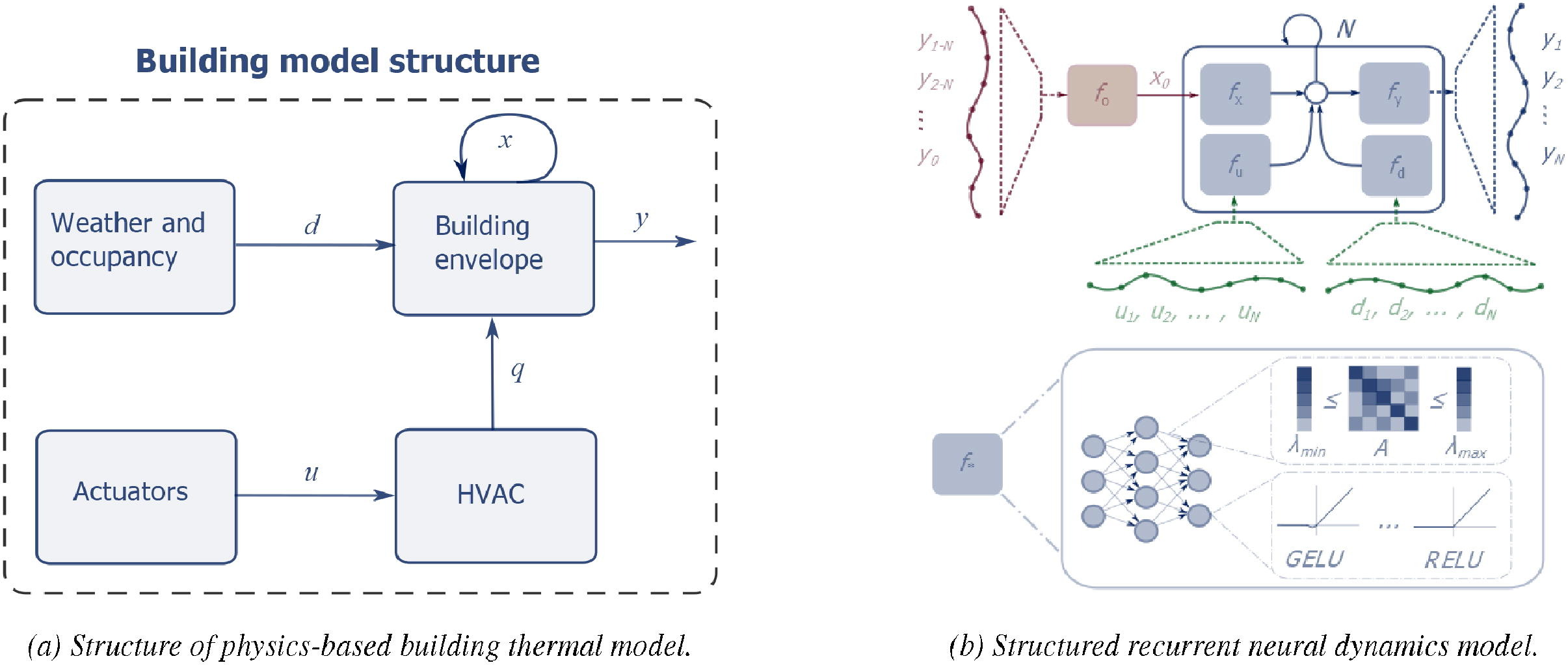
Differentiable predictive control of building energy systems
Despite intensive research efforts, the practical applications of advanced control methods such as MPC and DRL are still in the early stages. One of these challenges is the complexity of designing and deploying the optimal control policies in the current predominantly rule-based building automation systems.
To address this limitation, our team has developed novel methodology called differentiable predictive control (DPC) for learning constrained control policies for dynamical systems subject to operational and safety constraints. DPC presents a novel data-driven policy optimization algorithm that combines the benefits of both worlds, data-driven adaptive nature of DRL, and model-based performance and safety guarantees of MPC. We have demonstrated the proposed DPC method in a high fidelity simulation environment using learned model of multi-zone building thermal dynamics. For more information read our paper.

High fidelity simulation platform of building energy systems
Development of new building HVAC control algorithms has grown due to needs for energy efficiency and operational flexibility. However, case studies demonstrating new algorithms are largely individualized, making algorithm performance difficult to compare directly. In addition, the effort and expertise required to implement case studies in real or simulated buildings limits rapid prototyping potential. To address this issue, our team has been co-developing a high fidelity building simulation framework for performance benchmarking of modern control methods. This multi-institution project called Building Optimization Testing Framework (BOPTEST) was recognized with the best paper award issued by the Journal of Building Performance Simulation. For more information visit the project website.
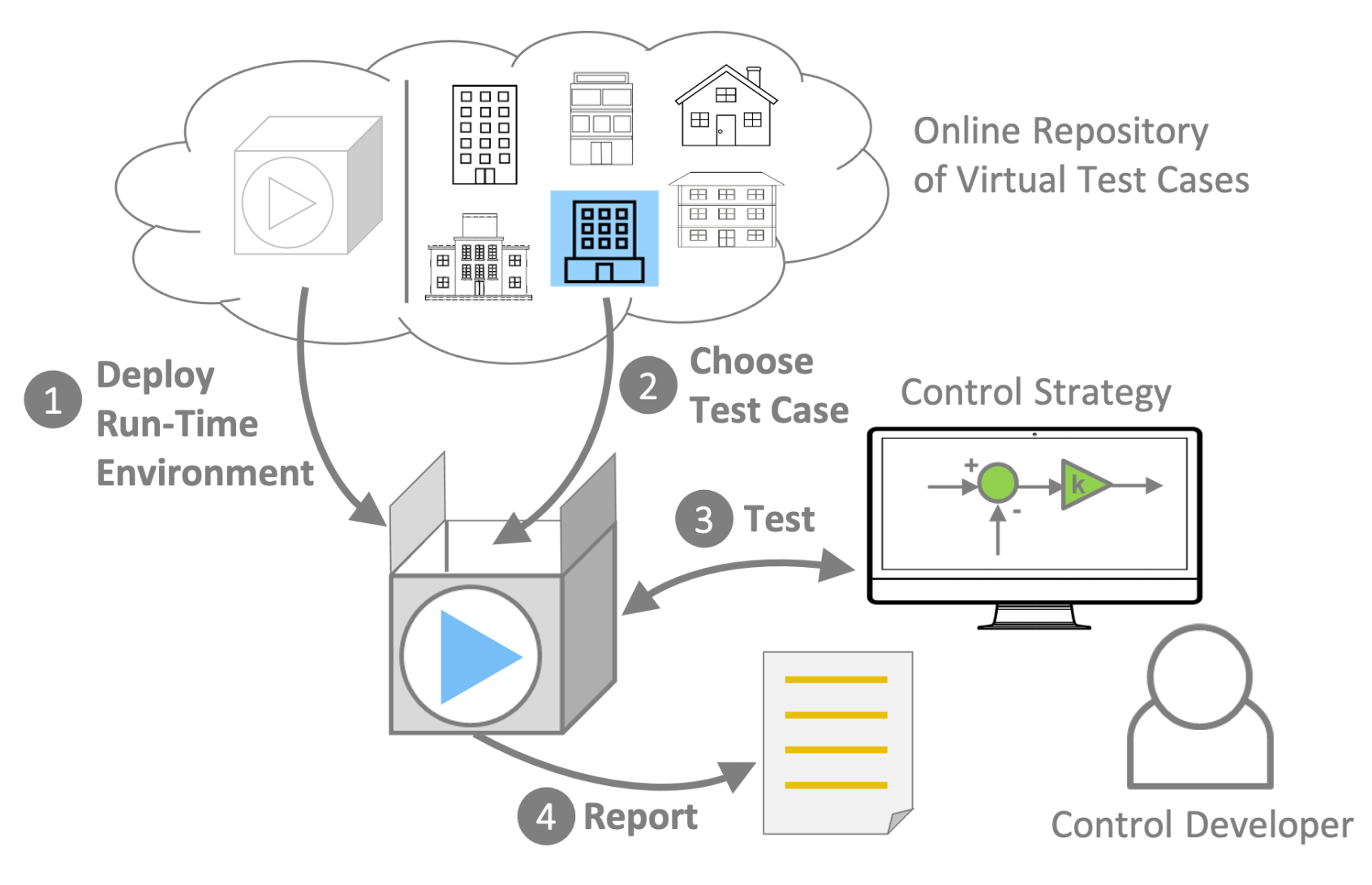
Open-source Software
The technology developed under this project is being open-sourced as part of the Neuromancer Scientific Machine Learning (SciML) library developed by our team at PNNL.
PNNL Team
- Draguna Vrabie (PI)
- Ján Drgoňa (Co-PI)
- Aaron Tuor (Co-PI)
- James Koch
- Madelyn Shapiro
- Wenceslao Shaw Cortez
- Soumya Vasisht
- Rahul Birmiwal
- Himanshu Sharma
- Brian Hutchinson (WWU Professor)
- Seth Briney (WWU student)
- Diego Llanes (WWU student)
- Harry Qiang (WWU student)
Industrial Partners
Acknowledgements
This project is supported through the U.S. Department of Energy (DOE), Energy Efficiency and Renewable Energy, Building Technologies Office (BTO) under the “Advancing Market-Ready Building Energy Management by Cost-Effective Differentiable Predictive Control” and the “Dynamic decarbonization through autonomous physics-centric deep learning and optimization of building operations” projects. PNNL is a multi-program national laboratory operated for the U.S. Department of Energy (DOE) by Battelle Memorial Institute under Contract No. DE-AC05-76RL0-1830.
Part of this work emerged from the IBPSA Project 1, an international project conducted under the umbrella of the International Building Performance Simulation Association (IBPSA). Project 1 develops and demonstrates a BIM/GIS and Modelica Framework for building and community energy system design and operation. This research was partially supported by the Assistant Secretary for Energy Efficiency and Renewable Energy, Office of Building Technologies of the U.S. Department of Energy, under Contracts nos. DE-AC05-76RL01830, and DE-AC02-05CH11231.
